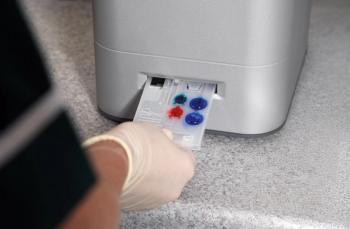
What's backing up your computer?
I've had quite a few mishaps with my cell phone. I wasn't worried this last time, though, because I'd opted for the "backup assistant" service provided by my wireless carrier. At least my contact list would be safe-so I thought.
I've had quite a few mishaps with my cell phone. It's been stolen, dropped in a pond, dropped in the toilet, cycled through the washing machine, and, most recently, lost. I wasn't worried this last time, though, because I'd opted for the "backup assistant" service provided by my wireless carrier. At least my contact list would be safe—so I thought. The system was supposed to copy and sync all of my contacts and store them online, where I could access them as needed. It didn't. It took a long time to compile that list. Why hadn't I verified that the backup was working? I took it for granted.
Dr. Jeff Rothstein
This started me thinking about my veterinary software backup protocol—wait, what protocol? I hadn't had any problems for a long time, so verifying that the backups were occurring regularly hadn't crossed my mind.
Why should you back up data?
An effective system will help ensure that the backup delivers what it's supposed to in your time of need. There are several ways that your data can disappear:
1. Your main data file is corrupted and you find out that your backup can't be retrieved or restored.
2. The server crashes and the hard drive dies. If you keep paper charts you can at least re-enter the information into your system. (That sounds fun, right?) But if your practice is paperless, no backup means no client list and without the client list, your practice is close to worthless.
3. What if your facility burns down or is damaged in a storm? Or what if someone breaks in and steals your computers? You could lose everything in the clinic—including your backup files.
When should you perform backups?
Backups should be performed at the end of the business day. If you use either manual or automatic backups, develop a system in which you verify that the backup is actually occurring. I didn't do that with my cell phone—I simply assumed that it was happening because it was supposed to. Knowing you have a backup is a good start. But you need to verify that you're getting good backups. I suggest you restore a backup file weekly to ensure that it's valid.
File storage options
There are many ways to save your backup files. When these files are zipped, they usually total less than 1 gigabyte, which you can easily store on a flash drive. I like flash drives because they're easy to take home. If you don't want to mess with a flash drive, some veterinary software providers now offer "data vault" services—an automatic system that backs up your information nightly and stores it online.
A key component of a good protocol is to store your backup data off site. If you're not storing your backup with an online service, take a backup home at least weekly. This is also a great opportunity to test the file by restoring it.
Remember that in many cases your team members know how to back up your data, too. That's a risk. Considering that your whole practice fits on a flash drive, you have reason to be concerned that a backup could be made and fall into the wrong hands—competitors, identity thieves, and so on. You control a lot of private client information, and you could be liable if that information got out. Consider insurance to cover you in case you lose your client list and also to limit your liability for both stolen client information and lost medical information and records.
My last piece of advice: Coordinate your backup protocol with your computer support technician, but don't take his or her word as the gospel. It's your business. Make sure it makes sense to you.
Veterinary Economics Editorial Advisory Board member Dr. Jeff Rothstein, MBA, is president of The Progressive Pet Animal Hospitals and Management Group in Michigan.
Newsletter
From exam room tips to practice management insights, get trusted veterinary news delivered straight to your inbox—subscribe to dvm360.






